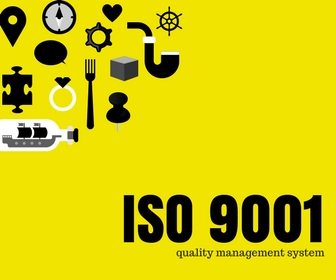ISO 9001:2015 is the most acceptable, widely used quality management system standard in the world. ISO 9001:2015 specifies the requirements for a QMS that organizations can use to design and develop their programs. Other standards which are related to the quality management system include the ISO 14000 family (environmental management systems), ISO 19011 (auditing management systems), and ISO 13485 (QMS for medical devices). The rest of the ISO 9000 family (including ISO 9000 and ISO 9004), and ISO/TS 16949 (quality management systems for automotive-related products). They are similar to QMS in many ways.
Elements of a quality management system.
Establishing a QMS in an organization, there are the general elements that are expected to be seen or created. Creating QMS is to serve and address a unique need in an organization. These elements include
• The organization’s quality policy and quality objectives
• Quality Manual
• Procedures, instructions, and records.
• Quality analysis
• Data Management
• Internal Processes.
• Customer Satisfaction with product quality.
This listed element ensures that a quality management system serves the purpose of meeting the customers’ and organization’s requirements. It also shows the proper execution and function of the QMS.
Implementing a quality management system.
Establishing a QMS helps companies run efficiently. Before building a quality management system. The organization must identify and manage various multi-functional processes that connect each other to guarantee customer satisfaction and for the targets to be met. There are many things to examine when building a QMS for your organization. It is important to do so because it is influenced by the different objectives, needs, and products and services provided by an organization.

This structure is based on Plan-Do-Check-Act (PDCA) cycle and allows for continuous improvement to both the product and the QMS. The necessary steps to implement are
•Design and build.
• Deploy
• Control
• Measure
• Review
• Improve
Design and build.
This serves to develop the structure of a QMS, its processes, and plans for implementation. And Senior management must supervise this part to ensure the needs of the organization and its customers which are a driving force behind the systems development.
Deploy.
Deployment involves breaking each process down into sub-processes. Tutoring staff on documentation, education, training tools, and metrics. Companies are using business intranets to assist in the deployment of QMS.
Control and measure.
Most of all, Control and measurement are two areas of establishing a QMS that is achieved through routine, systematic audits of the QMS. Especially, these areas vary greatly from organization to organization depending on size, potential risk, and environmental impact.
Review and improve.
Review and improvement related to how they are using the results of an audit. However, the goals are to determine the effectiveness and performance of each process toward its objectives. To pass the knowledge of these findings to the workers. And to produce new best practices and processes with regard to data from an audit.
Read also;
- How do we make the health and safety policy accessible to all workers?
- How do we make the health and safety policy accessible to all workers?
- The LOTO procedure that every safety officer should know
- Knife safety tips you can apply when using a knife
- 37 Chemical handling safety tips.
- Ways to prevent an electric shock
- How to calculate man hours in (hse) safety
- How often should you do an internal audit in compliance with the ISO management system?
- What is a Safe Working Load (SWL)?
- 7 ways to improve employee safety at your facility


